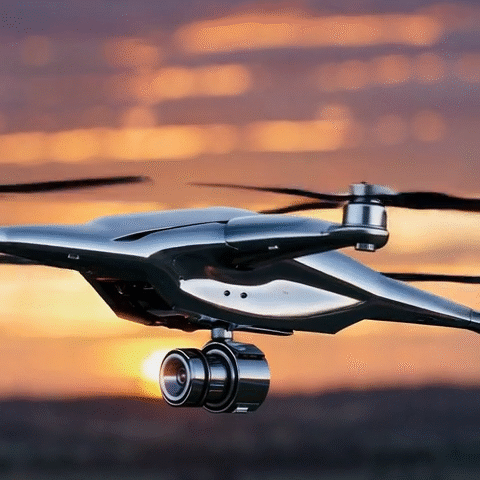A military drone (often called UAV – Unmanned Aerial Vehicle) is basically a flying robot controlled remotely or flying on its own using pre-programmed instructions and onboard AI.
1. Main Parts of a Drone
Think of it like a soldier with special gear:
-
Airframe (Body): Like the skeleton – wings, fuselage, propellers or jet engine.
-
Power System: Battery, fuel engine, or hybrid. Big drones (Predator, Bayraktar) use aviation fuel.
-
Flight Control System: The “brain” (autopilot computer + sensors like gyroscope, accelerometer, GPS, altimeter).
-
Communication System: Radios, satellites, or encrypted datalinks to connect with the ground station.
-
Payload: The mission gear – can be:
-
Cameras & sensors (for surveillance, night vision, thermal, radar).
-
Weapons (missiles, bombs).
-
Jammers (for electronic warfare).
-
2. How It Flies
-
Controlled by Ground Control Station (GCS) with pilots sitting in a room, not in the aircraft.
-
Commands sent via radio (short range) or satellite link (long range, thousands of km).
-
Autopilot keeps it stable (like a car’s cruise control, but smarter).
➡️ If connection is lost → Drone switches to Return-to-Base (RTB) mode using GPS.
3. How It Sees
-
EO/IR Cameras (Electro-Optical / Infrared): For day and night.
-
Synthetic Aperture Radar (SAR): Can see through clouds and smoke.
-
SIGINT Payload: Can “listen” to enemy radios, phones, radars.
-
Targeting Pods: For guiding missiles with laser or GPS.
This gives the operator a live battlefield picture from miles away.
4. How It Strikes
-
Operator identifies target using sensors.
-
Drone locks on with laser designator or GPS coordinates.
-
Weapons (Hellfire missile, guided bomb) are released.
-
Drone can strike silently, precisely, without risking pilot lives.
5. Levels of Autonomy
-
Remote-Controlled: Operator flies everything like a video game.
-
Semi-Autonomous: Operator gives commands (“fly to this point, patrol this area”).
-
Autonomous (AI-driven): Drone decides best flight path, detects threats, sometimes even engages (still controversial).
6. Military Uses
-
Surveillance & Recon: “Eyes in the sky.”
-
Target Strikes: Pinpoint elimination of high-value targets.
-
Electronic Warfare: Jamming radars, blocking communications.
-
Logistics: Delivering supplies in combat zones.
-
Swarming Tactics: Many small drones overwhelming defenses.
7. Strengths
-
No risk to pilot.
-
Long endurance (can fly 24+ hours).
-
Can operate in dangerous airspace.
-
High precision, less collateral damage (compared to old bombing).
8. Weaknesses
-
Vulnerable to jamming (GPS, comms).
-
Can be shot down by advanced air defenses.
-
Expensive (big drones).
-
Ethical/political issues with autonomous strikes.
✅ In simple words:
A military drone is a remote-controlled soldier in the sky – it flies with autopilot, sees with cameras and radars, talks to operators through satellites, and carries tools (sensors or weapons) to complete missions without putting a human pilot in danger.



